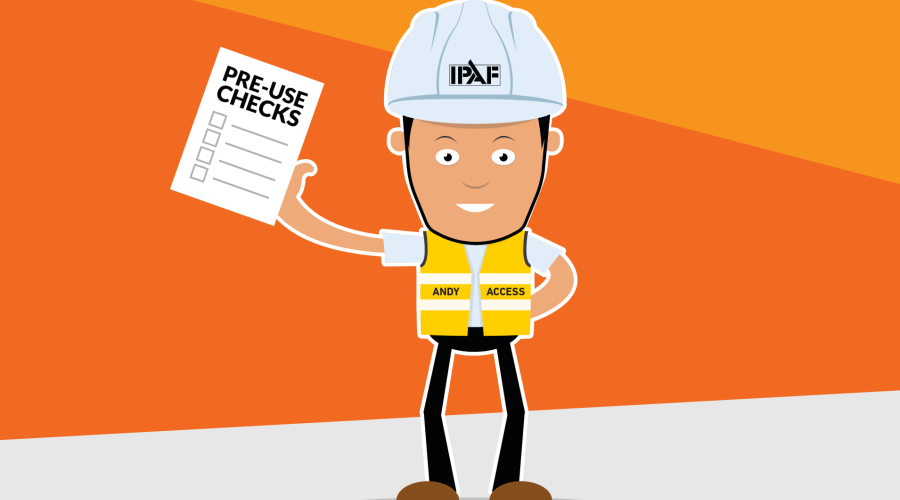Back to Basics

Resource also available in:
Mobile elevating work platforms (MEWPs) are one of the safest methods of enabling temporary work at height when used correctly.
IPAF’s Back to Basics campaign identifies common hazards associated with using MEWPs and gives advice about how to manage risks and work safely.
Safe work at height should:
• Be properly planned
• Include a documented recovery and rescue plan
• Include selection of the most appropriate MEWP
• Be carried out by trained and familiarised operators
• Be appropriately supervised
Responsibilities of the User (Contractor/employer)
Users should ensure an appropriate risk assessment and Safe System of Work (SSoW)
are completed and documented by a competent/qualified person prior to any work at height. Users should also ensure MEWP operators are adequately trained and familiarised. A recovery and rescue plan should be in place, documented, communicated, and regularly rehearsed. MEWP operators should also be trained in recovery and rescue procedures, and the nominated rescue personnel should be familiarised with the MEWP’s ground controls and emergency/auxiliary lowering controls.
Responsibilities of the MEWP Operator
Operators should conduct a workplace inspection prior to starting work. The following six hazards should be particularly considered as they are among the most common
causes of accidents and incidents:
1. Mechanical or technical issues
Operators should conduct and record a pre-use inspection of the MEWP. The IPAF-recommended pre-use inspection checklist is included in ePAL, IPAF’s smartphone app for operators.
The operator should also check the MEWP for:
- A legible operator’s manual specific to the serial number of the MEWP
- Evidence of a valid thorough examination/periodical inspection
- Its serial number: it must be the same onthe compliance plate and on the MEWP itself (normally stamped on the chassis)
If there is any doubt about the MEWP’s safety, the operator should isolate, tag, and report the MEWP to their supervisor.
2. Crushing and/or entrapment
Steel structures, doorways and other overhead obstructions could affect operator or platform occupant safety. If a risk is identified, the user should consider using a MEWP fitted with a secondary guarding system. The correct selection of the secondary guarding system is critical for the safety of the MEWP operator.
3. Falls from the platform
Occupants leaning out or overreaching from a platform increases fall risk. Falls from height are preventable if MEWPs are used within their specified safety limits. Always ensure the most appropriate MEWP is selected, positioned correctly, and that relevant Personal Fall Protection Equipment (PFPE) is worn by the operator/platform occupants.
4. Overturns
Failure to consider the load bearing capacity of the ground/floor could cause the MEWP to become out of level, unstable, or overturn. MEWP stability relies on the ground/floor or structure to safely support its weight in all configurations. Always set up the MEWP on a firm surface.
5. Hit by falling objects
Falling objects can cause injuries or fatalities to platform occupants and damage a MEWP including its critical safety components. When in a MEWP be aware of work being carried out overhead. Always set up a MEWP in a safe position where it, or its occupants, cannot be hit by falling objects.
6. Electrocution or electric shock
Most MEWPs are not insulated, so contact with electricity – including arcing – can result in serious injuries or fatalities. Be aware of both overhead and underground power lines, as contact or arcing can cause electrical energy to travel through the MEWP structure and exit through the tyres, tracks or stabilisers straight to earth. It is critical that MEWPs
are set up a safe distance from overhead power lines.
IPAF recommends these distances as a minimum:
- 15m with a fully extended boom on transmission lines
- 9m with a fully extended boom on distribution lines
